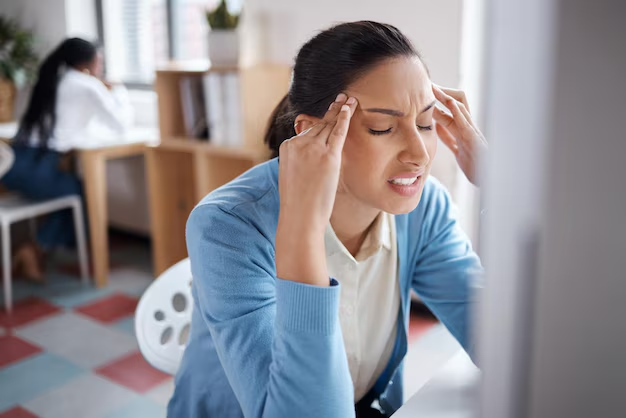Finding Relief: What Helps Migraines?
Migraines—those throbbing, often debilitating headaches that can strip away your focus and energy—are a common condition that affects millions around the world. If you suffer from migraines, you know firsthand how they can disrupt your daily life. But what truly helps ease the pain and potentially reduce the frequency of these attacks? Let’s explore some strategies, lifestyle changes, and remedies that may offer relief without venturing into medical advice or prescriptions.
Understanding Migraines: A Quick Overview
Before diving into solutions, it’s essential to understand what migraines are. Migraines are not just bad headaches; they are a neurological condition characterized by intense, pulsing pain, usually on one side of the head. Symptoms often include nausea, sensitivity to light and sound, and sometimes visual disturbances called auras.
Common Triggers and Symptoms
Migraines can be triggered by various factors, which vary greatly from person to person:
- Hormonal changes: Common in women, especially around menstrual cycles.
- Dietary influences: Dehydration, caffeine, alcohol, and certain foods like cheese or chocolate.
- Environmental factors: Bright lights, loud noises, or strong smells.
- Stress and lack of sleep: Both are notorious for bringing on headaches.
Awareness of what might trigger your migraines can be a powerful tool for prevention.
Effective Lifestyle Changes
Adapting certain lifestyle habits can play a significant role in managing migraines. Here are some proven lifestyle modifications:
Regular Sleep Pattern
Prioritize Sleep: Ensuring consistent sleep patterns can significantly impact how frequently migraines occur. Aim for 7-9 hours of quality sleep every night to help regulate your body's natural rhythms.
Balanced Diet
Watch Your Food Intake: Eating a healthy, balanced diet while avoiding trigger foods is crucial. Incorporate plenty of fruits, vegetables, whole grains, and lean proteins.
Stay Hydrated
Drink Enough Water: Dehydration is a common trigger. Make it a habit to drink water throughout the day.
Manage Stress
Mindful Approach: Engaging in stress-reducing activities like yoga, meditation, or deep-breathing exercises can curtail the onset of stress-induced migraines.
Exercise Regularly
Stay Active: Regular physical activity, such as walking, swimming, or cycling, enhances overall well-being and might help prevent migraine episodes.
Natural Remedies and Relaxation Techniques
While lifestyle changes are foundational, adding natural remedies can provide further relief. Here’s what enthusiasts often recommend:
Herbal Remedies
Explore Herbal Solutions: Supplements like feverfew and butterbur are touted for their potential in migraine prevention. However, always approach with caution and consider professional guidance if necessary.
Aromatherapy
Embrace Essential Oils: Certain essential oils, like lavender or peppermint, may reduce the severity of a migraine attack. Inhaling their aroma or applying them diluted to temples can soothe the senses.
Cold and Hot Therapy
Temperature Tactics: Cold compresses can numb and ease pain, while heat pads on the neck or shoulders relax stressed muscles. Both can be effective non-medicinal pain management strategies.
Acupressure and Acupuncture
Pressure Points and Needles: Acupressure involves applying pressure on specific points of the body to relieve pain, while acupuncture involves inserting needles in these points. Both have been part of traditional pain management strategies.
Medications: When They Are Necessary
Sometimes, lifestyle changes and natural remedies are not enough. While specifics are beyond our discussion, understanding the drug categories can empower informed discussions with healthcare providers.
Over-the-Counter (OTC) Options
Ease with Caution: OTC analgesics like ibuprofen or acetaminophen can provide temporary relief. However, they should be used responsibly to avoid rebound headaches.
Prescription Medications
Explore with Experts: Triptans, ergots, and other prescriptions can be game-changers for chronic migraine sufferers. Consult a healthcare professional for guidance.
Preventive Meds
Preemptive Approach: If you experience frequent migraines, a doctor might discuss preventive medications to reduce frequency and severity.
Emerging Therapies and Technologies
The world of migraine treatment is evolving rapidly, with many cutting-edge approaches:
Neuromodulation Devices
Technology for Pain Relief: Devices that stimulate the nerves controlling pain pathways can be a non-invasive option. They can be self-administered and are gaining popularity among migraine communities.
Biofeedback and Cognitive Behavioral Therapy (CBT)
Mind-Body Approach: Biofeedback trains individuals to control bodily processes that are typically involuntary, like heart rate. CBT addresses the psychological impact of chronic migraines, offering coping strategies.
Gaining Insight with Wearable Tech
Track for Improvement: Wearable technology that monitors physical activities and identifies patterns leading to migraines can provide valuable insights into prevention and management.
Creating a Personal Migraine Management Plan
Crafting a tailored plan that incorporates these strategies can be empowering:
- Identify Triggers: Keep a migraine diary to track potential triggers and warning signs.
- Adopt a Holistic Lifestyle: Combine diet, exercise, sleep, and stress management strategies.
- Consider Complementary Therapies: Explore what natural remedies work for you.
- Consult Professionals: Stay engaged with healthcare providers to adjust strategies as needed.
The Light in the Tunnel
Living with migraines doesn’t have to be a battle you fight alone. There’s an array of strategies, tools, and support systems designed to help you regain control. Whether it’s through lifestyle adjustments, natural remedies, or emerging technologies, finding what helps you in your unique migraine journey is possible. Stay informed, be proactive, and embrace the joy of life, even amidst challenges.
Quick Reference Summary
- 💡 Triggers and Symptoms: Identify personal triggers and recognize early signs.
- 🥑 Healthy Habits: Prioritize sleep, balanced diet, and hydration.
- 🧘♀️ Stress Management: Incorporate yoga and mindfulness practices.
- 🌿 Natural Remedies: Consider herbs like feverfew and essential oils.
- ❄️☀️ Temperature Therapy: Utilize hot and cold compresses.
- 🚶Regular Exercise: Engage in at least 150 minutes of moderate exercise weekly.
- 💊 Medication Awareness: Use OTC options wisely and know when to seek prescription solutions.
- 🤖 Tech and Therapy: Explore neuromodulation devices and therapy options.
By integrating these strategies into your lifestyle, you may find a path to fewer, less intense migraines—ultimately enhancing your quality of life.
